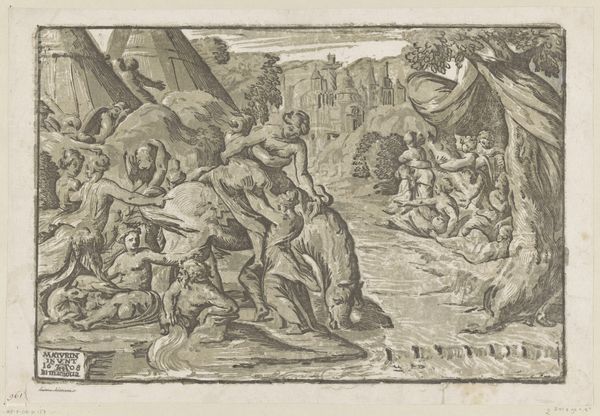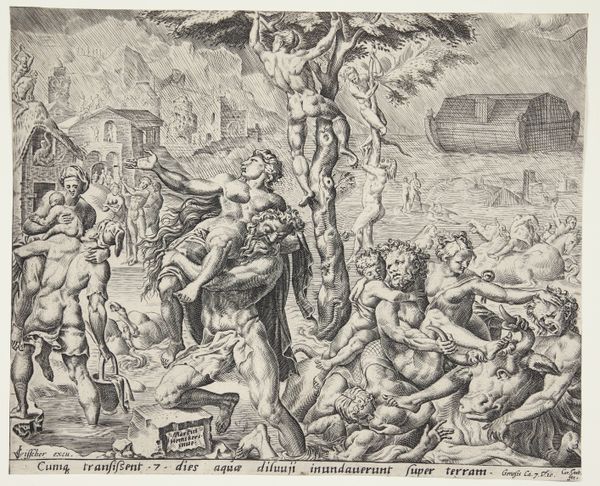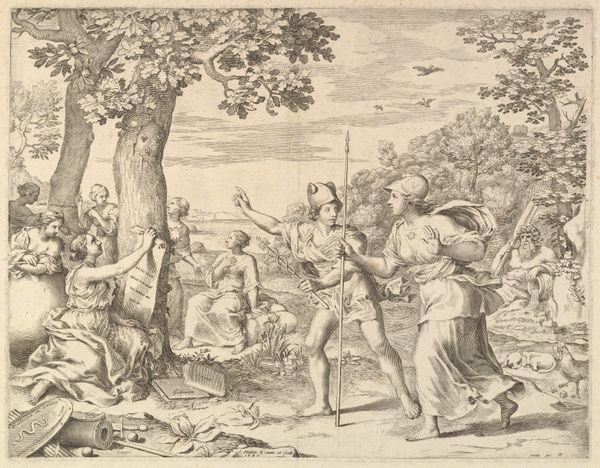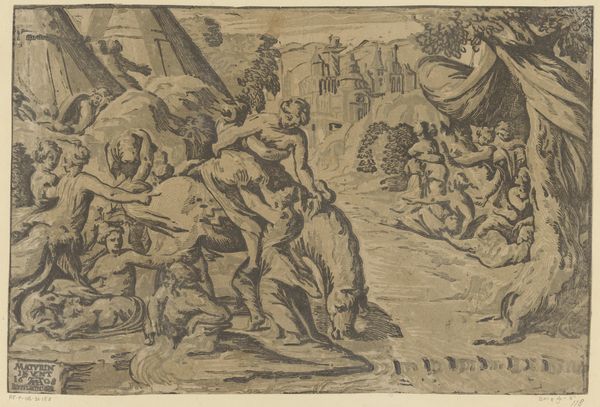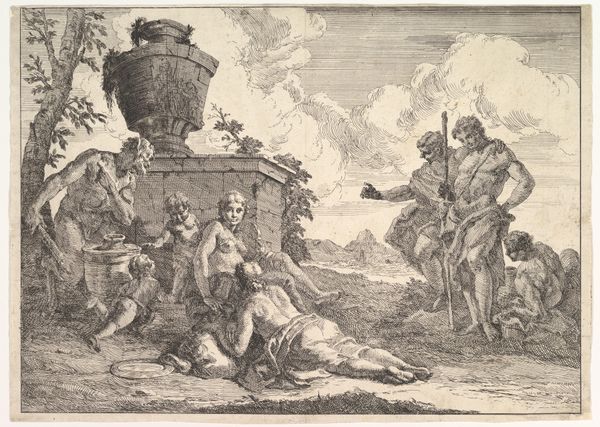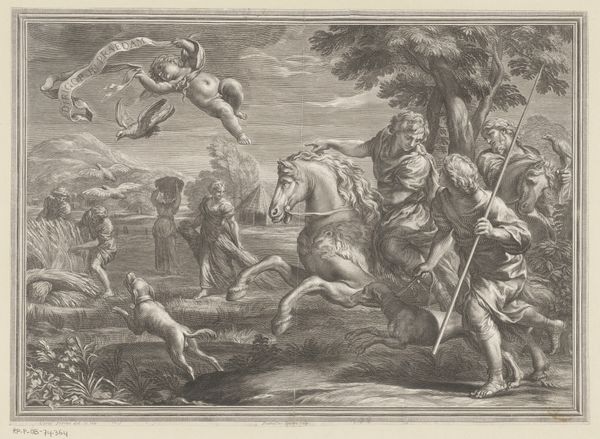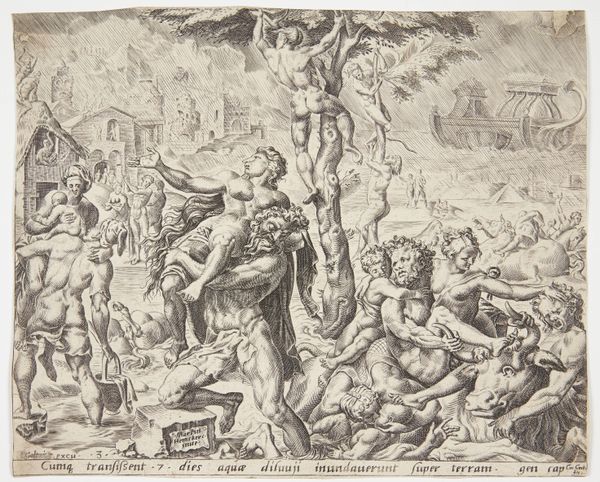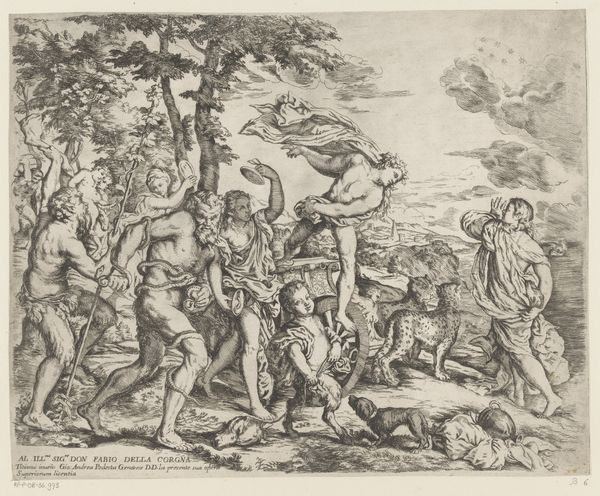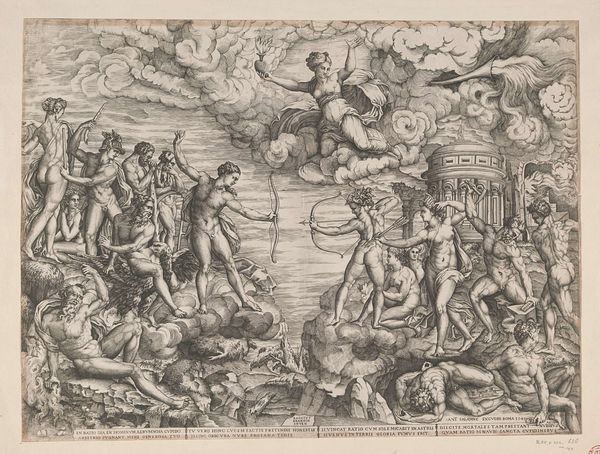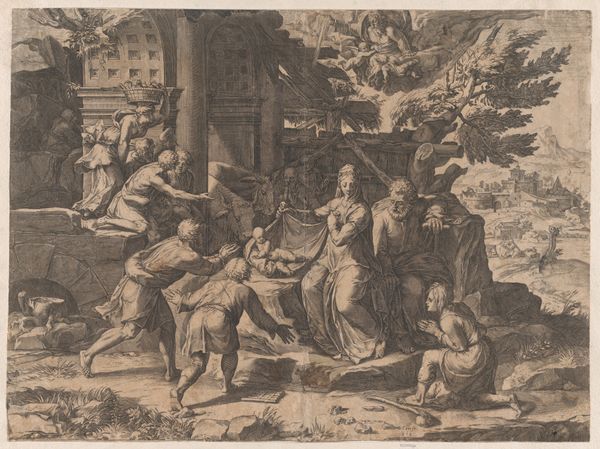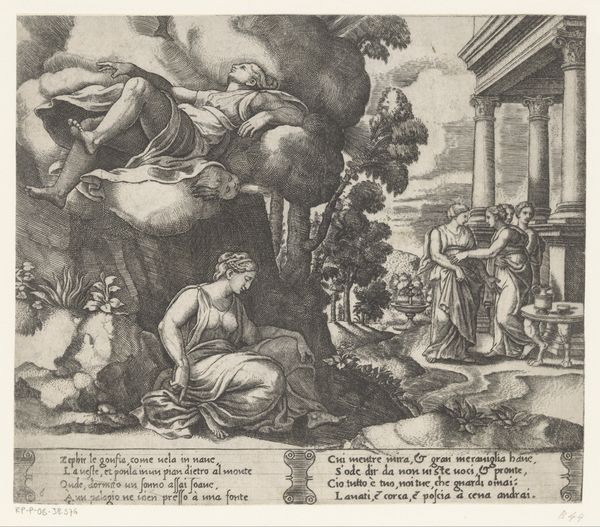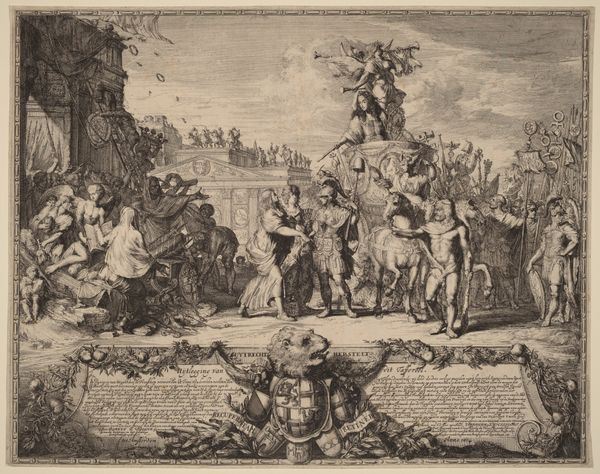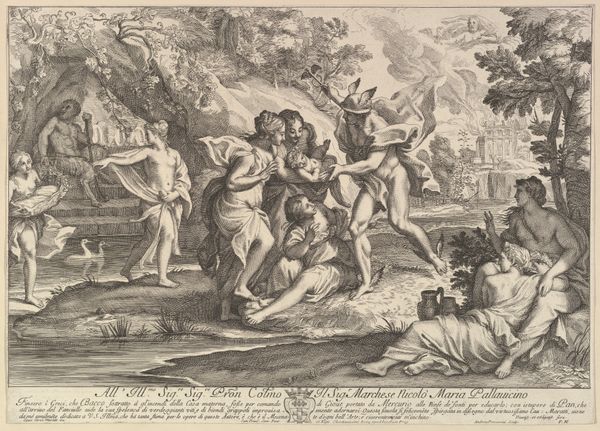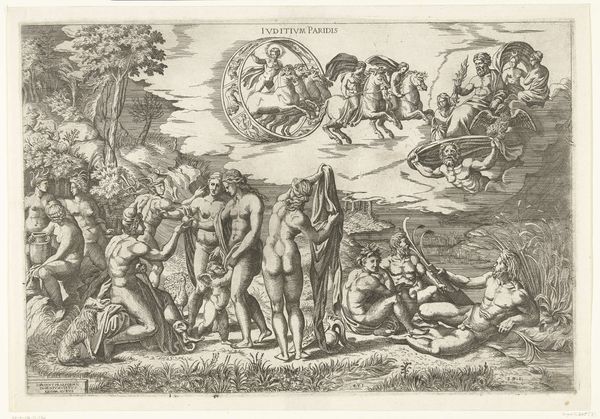
print, engraving
#
ink drawing
#
narrative-art
#
baroque
#
pen drawing
# print
#
figuration
#
history-painting
#
engraving
Dimensions: height 438 mm, width 540 mm
Copyright: Rijks Museum: Open Domain
Curator: Guillaume Chasteau’s print, “Martyrdom of Saint Stephen,” crafted before 1673, is an exquisite example of Baroque engraving now residing at the Rijksmuseum. My first reaction is how successfully the composition captures such brutality with delicate lines and shading. Editor: Delicate? I see this image, and I immediately think about the very real, very violent persecution and murder of someone who stood for their beliefs. To me it's less about line quality and more about how systems of power inflict violence. Curator: Certainly, the subject matter speaks to a history of religious persecution. But within the artwork itself, Chasteau utilizes dynamic lines and tonal variations, manipulating light to evoke both drama and pathos. It's worth appreciating how those elements combine here. Editor: Light and dark aren't neutral, though. The chiaroscuro is a conscious decision to depict a scene loaded with injustice, oppression, and religious conflict. It serves to enhance the drama, yes, but also to remind us of the power dynamics at play. Stephen is centered, vulnerable, his killers animated by fervor or apathy. Curator: Precisely, the placement of Saint Stephen, kneeling and bathed in light as his aggressors tower above, shows artistic choices building emotional impact. We see a confluence of expert line work and classical training that adds gravity. And look at the angelic figures in the sky above! Editor: I agree, it’s certainly a striking composition. But while you might focus on the virtuosity of the engraving and dramatic staging of light and shadow, I see the engraving as a lens through which to confront uncomfortable historical narratives, exploring questions of faith, persecution, and the ethics of power. How do we engage with works of art depicting painful histories, without losing sight of the real people and their suffering? Curator: An important and difficult question to address, especially as we think about Baroque art’s reliance on these charged allegories. Editor: Indeed. I hope our reflections have at least prompted new considerations around technique and message, form and meaning.
Comments
No comments
Be the first to comment and join the conversation on the ultimate creative platform.
